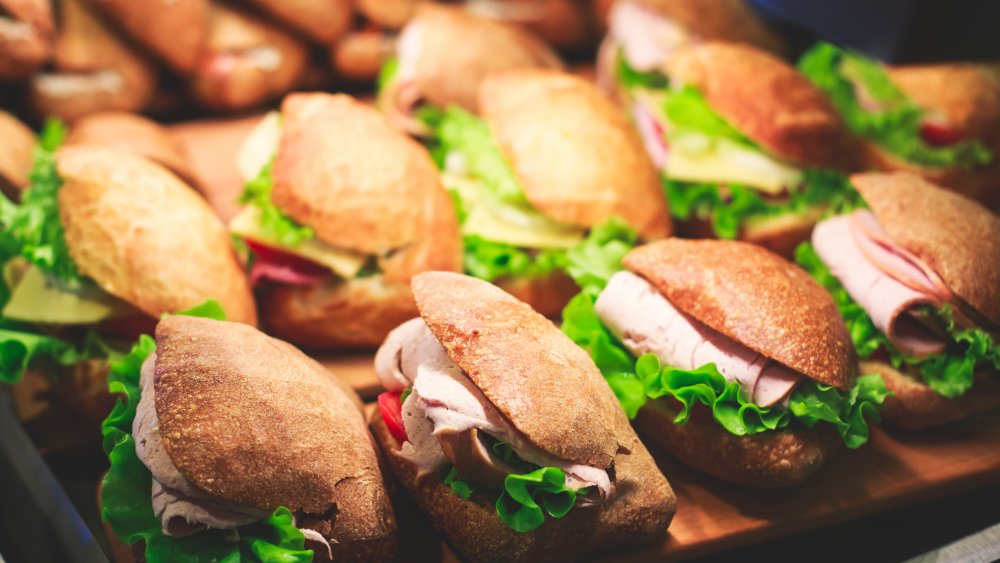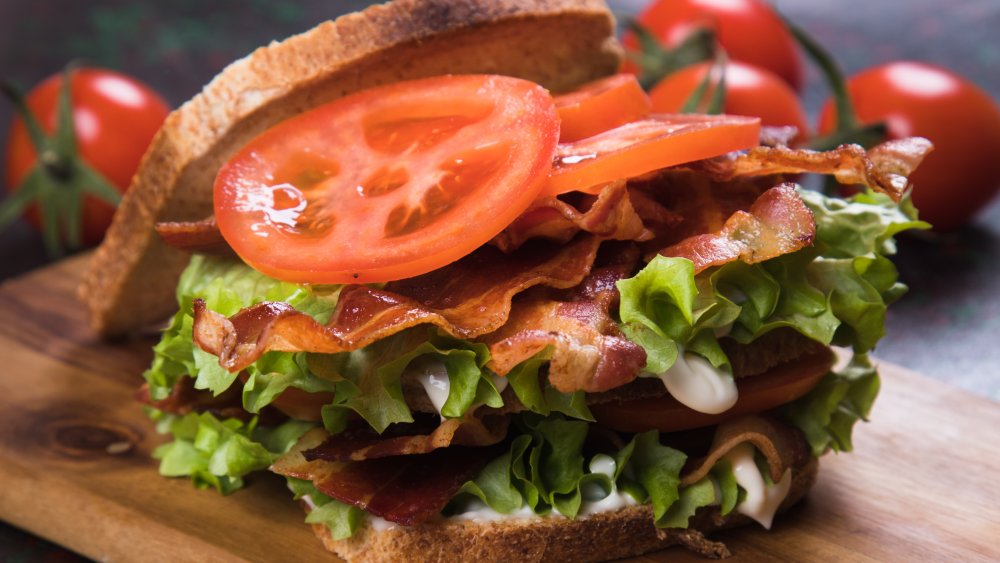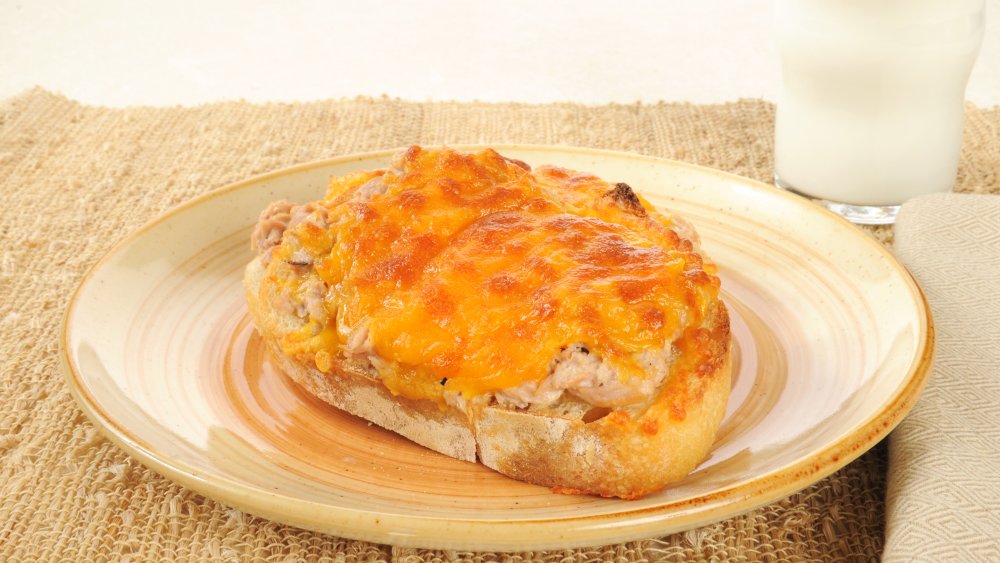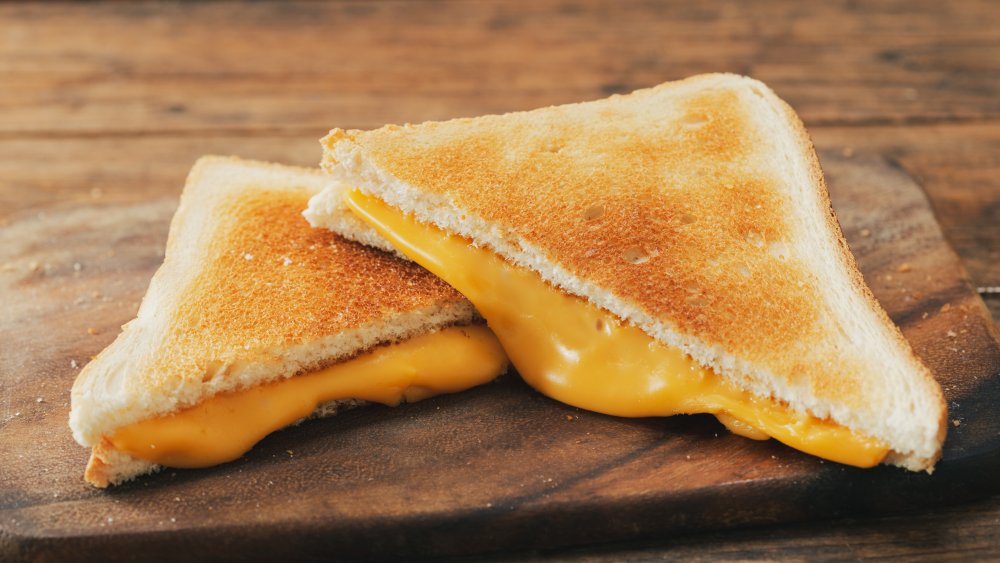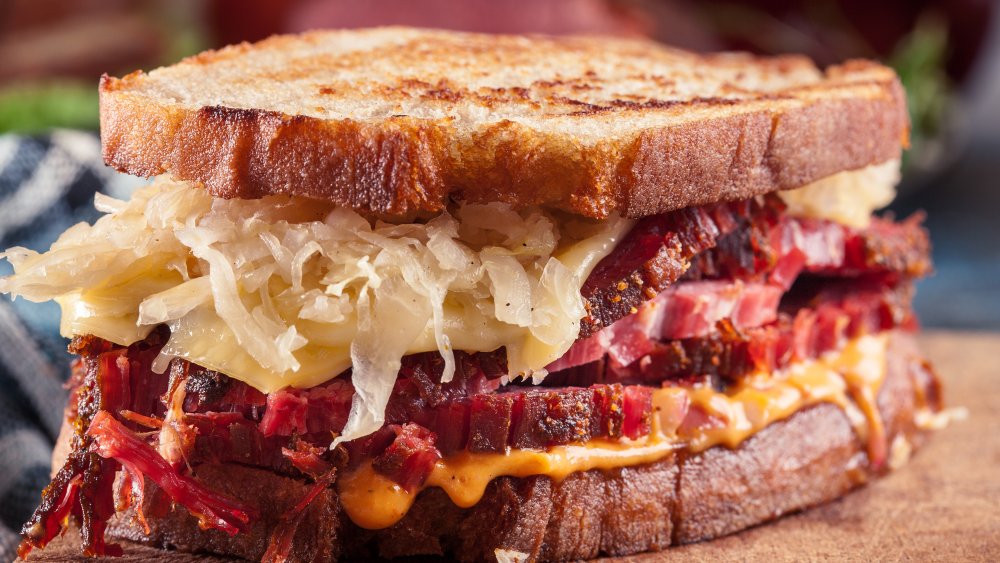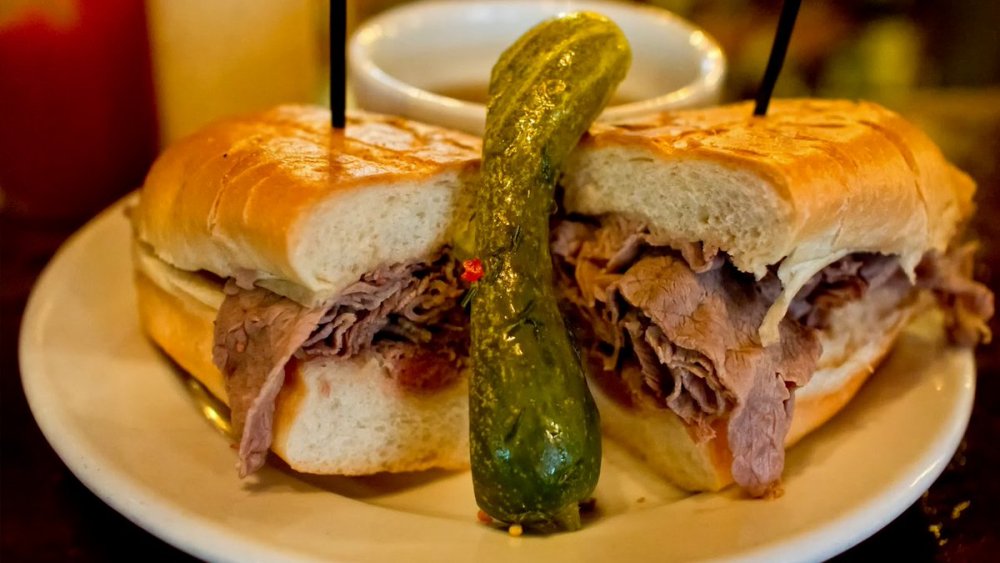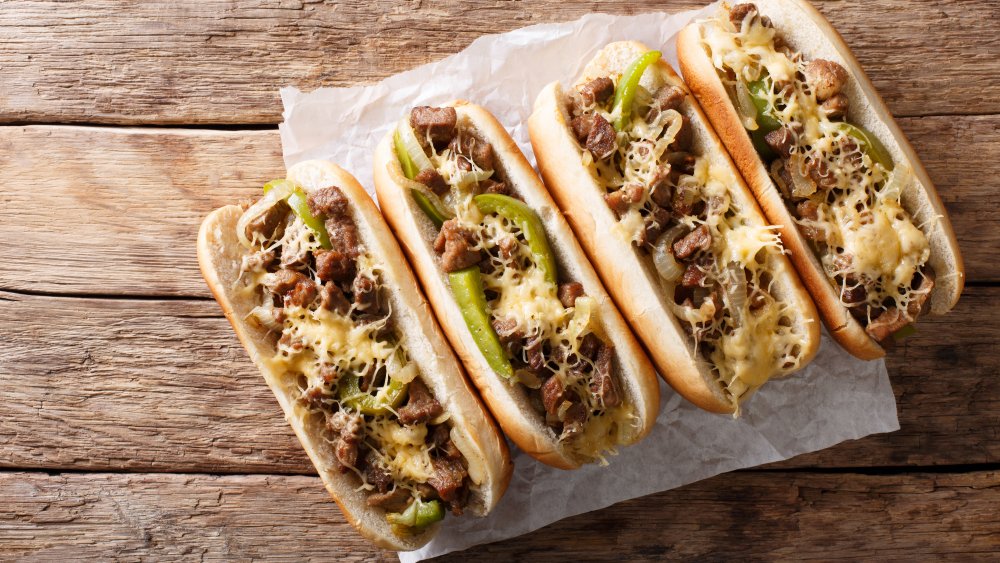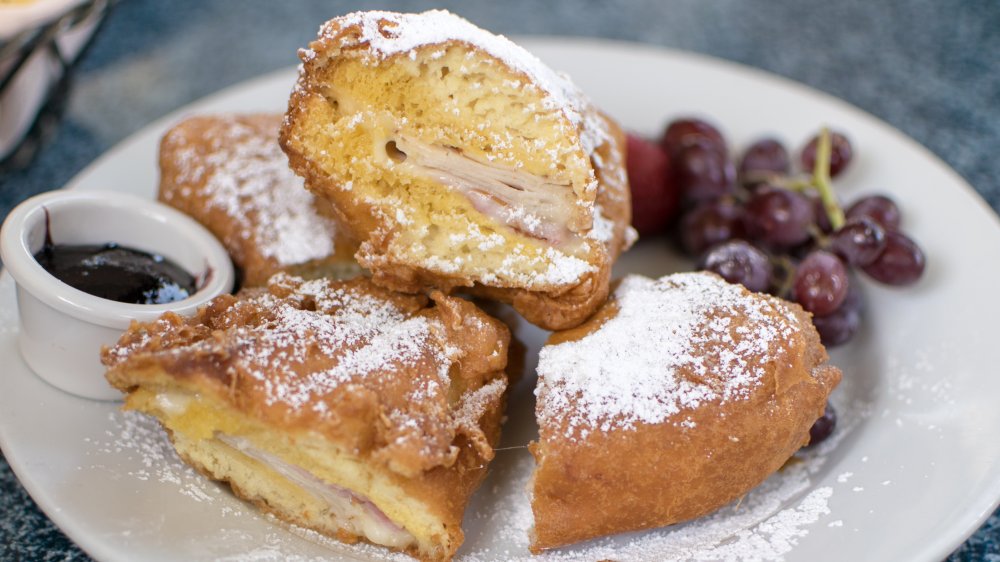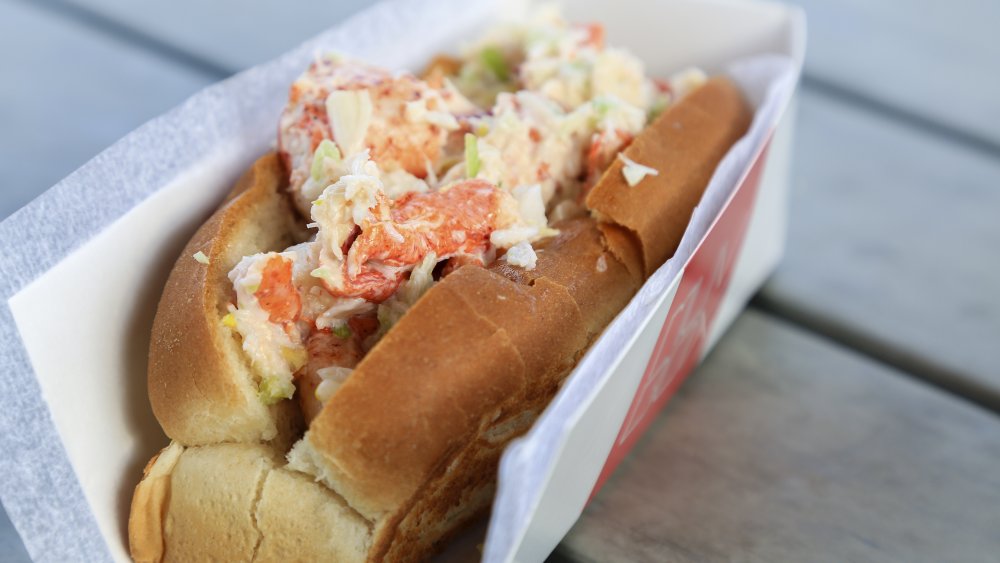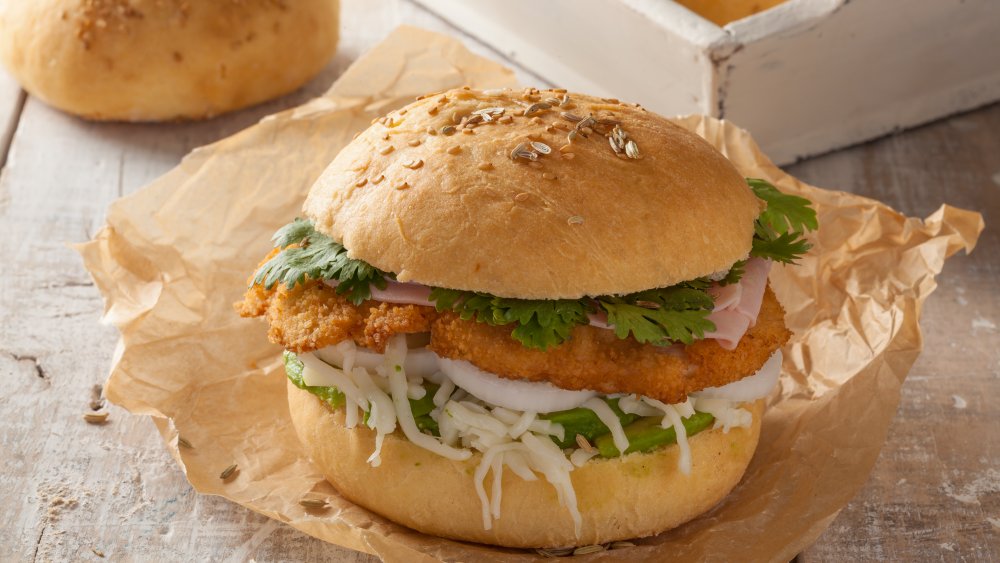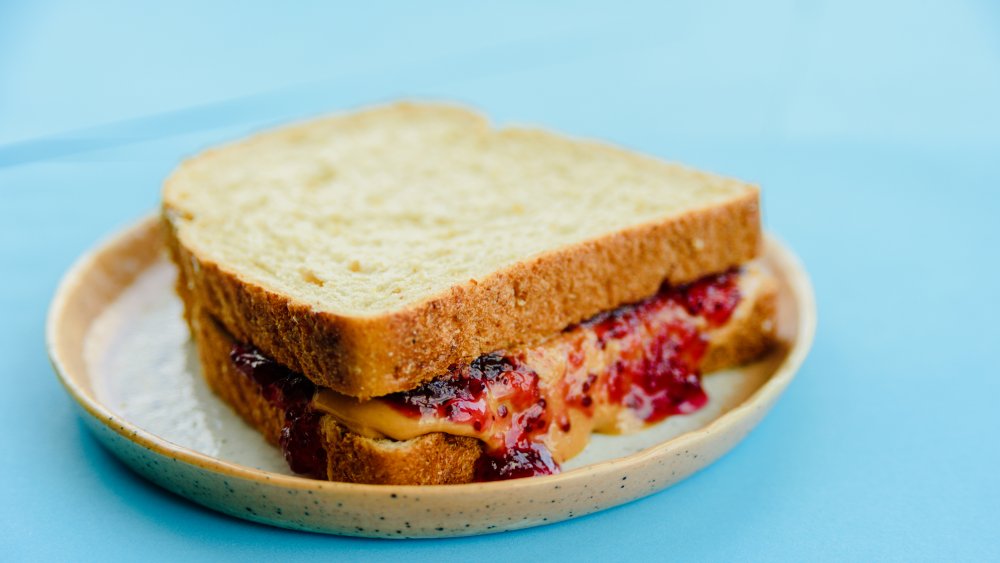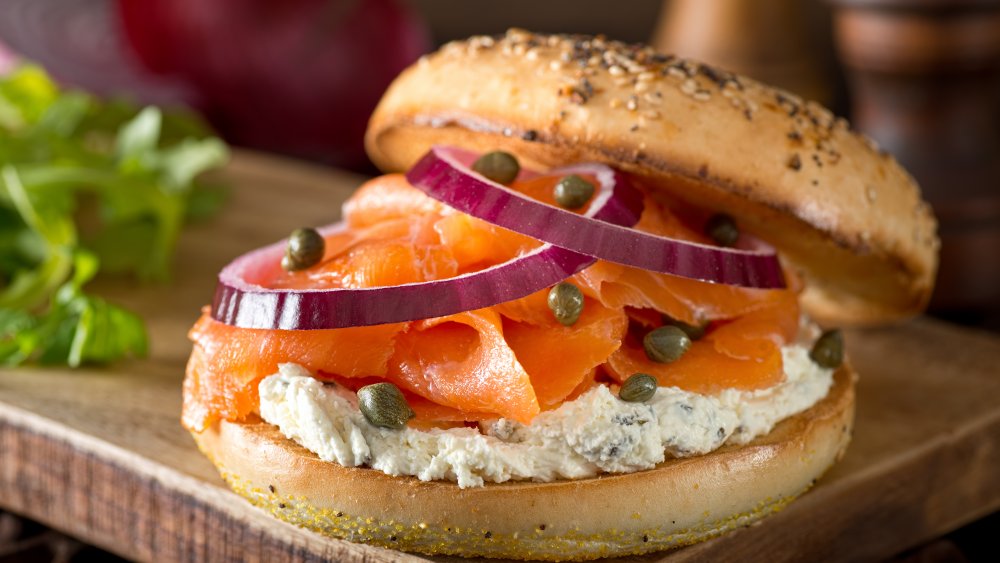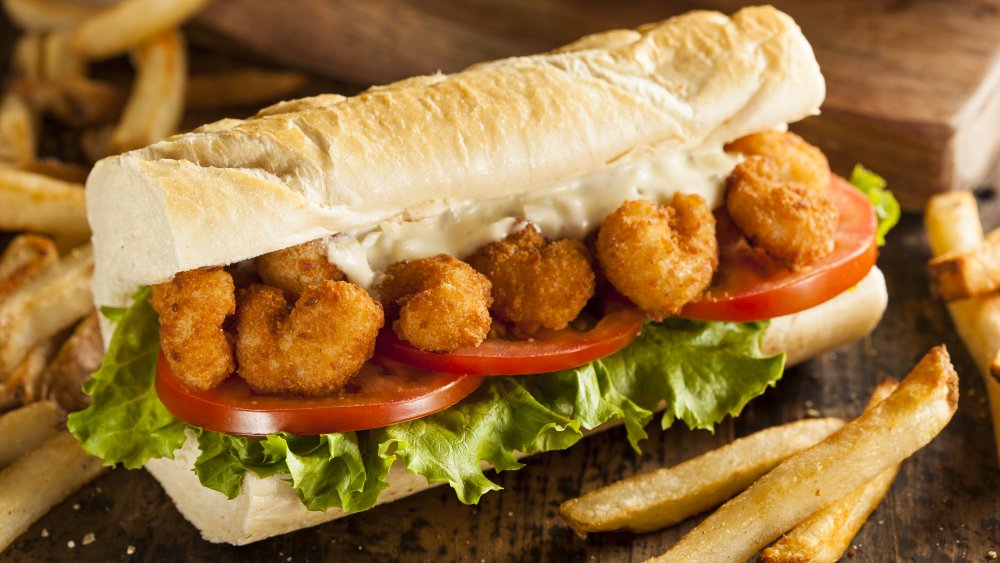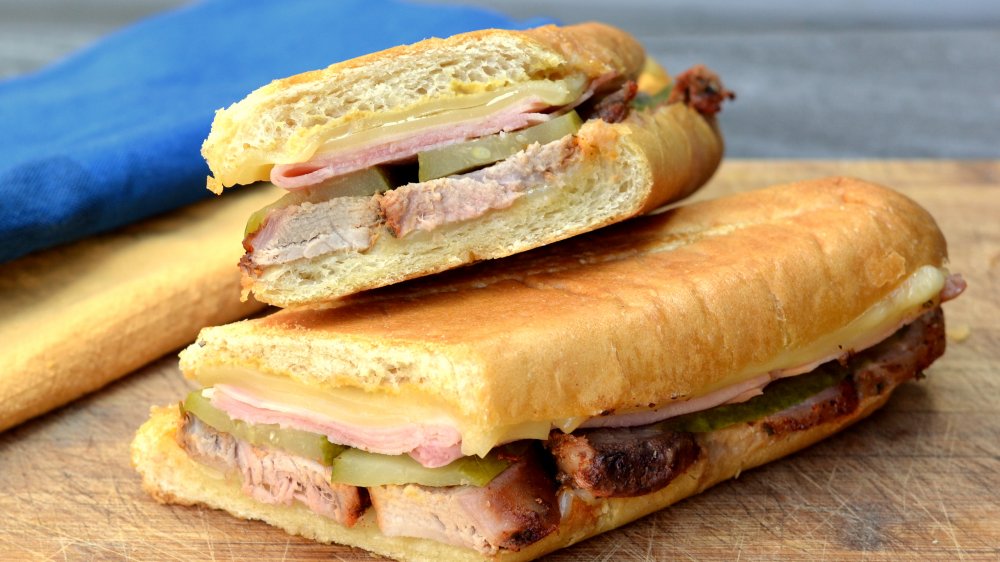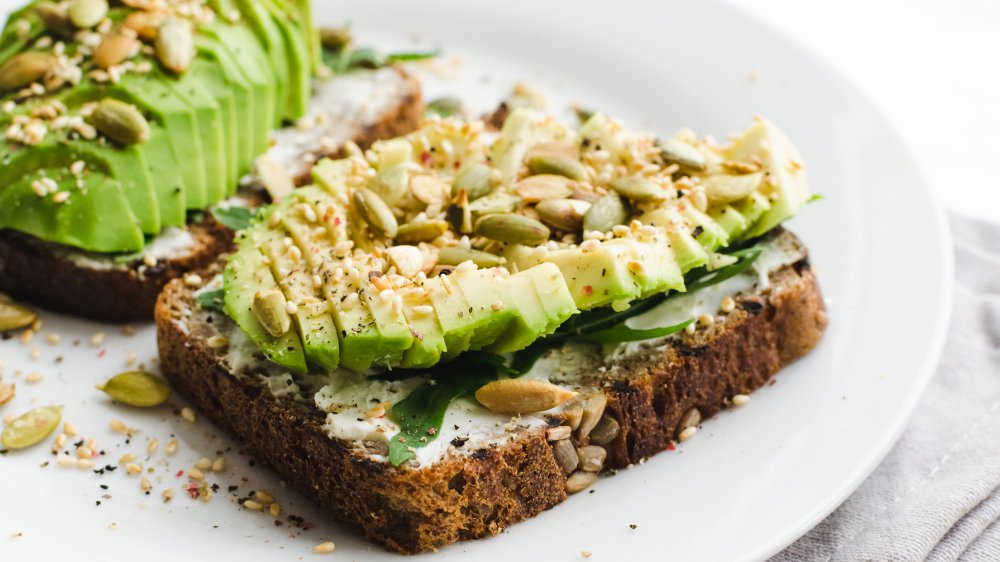These Are Hands Down The Greatest Sandwiches Of All Time
We may receive a commission on purchases made from links.
The sandwich is the perfect meal. It's portable, it's filling, and there are endless possibilities. Sandwiches can be sweet or savory, and they can be served hot or cold. Are you a vegetarian? Great, have a sandwich. Are you a meat lover? Great, here are more sandwiches.
While England may not seem like the home of many great culinary inventions, we can thank the UK for the invention of sandwiches. The sandwich was popularized in 1762 by John Montagu, the Fourth Earl of Sandwich. Montagu had quite the gambling problem and spent hours and hours at the card table. He wanted a meal that he could eat with one hand while playing cards, and so his cook brought him a piece of meat between two pieces of bread. He liked this portable, meat-and-bread meal so much that he ate it all the time, and it became quite popular, eventually becoming known as the sandwich.
From the one-handed gambling snack of an Earl to an endlessly varied staple, here are some of the best of the best.
BLT sandwich
You shouldn't need a recipe for this. It's in the name, guys: bacon, lettuce, and tomato. But if you're going to get fancy, try this one. The beauty of the perfect BLT is that if you use good B, L, and T, you will have a good BLT. This sandwich is all about using good quality ingredients. That said, there is a little margin for error. According to food critic Mimi Sheraton, the bacon needs to be freshly fried, hot, and crispy. The lettuce must be anything other than iceberg and have some real bite. And the bread must be toasted.
The origins of the BLT are a bit opaque. Some believe it's a descendent of English tea-time sandwiches from the Victorian era, while others believe it's an American variation on the classic club sandwich, which was popularized in the dining cars of America's bustling railways. According to Michele Jordan, author of The BLT Cookbook, the first mention of the BLT can be found in a 1903 issue of Ladies Home Journal magazine.
Tuna melt sandwich
Has a tuna melt ever been spectacular? Probably not, but it's a diner classic for a reason. Classically open-faced but sometimes served between two slices of bread, this sandwich combines toasted bread, tuna salad, and melted cheese. While the true origin of this sandwich is somewhat murky, the tuna melt was allegedly invented at a Woolworth's lunch counter in 1965 in Charleston, South Carolina. According to writer Warren Bobrow, an order for a grilled cheese sandwich on white bread with a smear of mayo came in. Then, "atop the griddle on a shelf, a freshly made tuna salad sits [on] the edge ... and, as if guided by a hidden hand, the contents tip over, falling on the grilled cheese. Voilà! The Tuna Melt is born!"
The tuna melt can be a polarizing sandwich. Not everyone is a fan of warmed up tuna salad and cheese. What's the secret to a perfect tuna melt? Crispy, substantial bread (think: English muffin, rye bread, or a kaiser roll), not too much tuna salad, and actually melt that cheese, please!
Grilled cheese sandwich
There is nothing quite like the simple pleasure of eating a good grilled cheese sandwich. What's the secret to making a good grilled cheese sandwich? First, make sure that you choose a cheese that melts well. You can stick to the classics with American cheese slices or cheddar or get a little fancier with Gruyere or Brie. The question as to whether you should use butter or mayonnaise on your grilled cheese can be pretty polarizing, but whatever spread you decide to use, remember to go low and slow. The last thing you want is some un-melted cheese in between two slices of burnt bread.
From whence did such a simple, perfect culinary invention appear? Something similar to today's notion of a grilled cheese can be traced back to World War II when Navy Cooks prepared "American cheese filling sandwiches." The term "grilled cheese" didn't appear until the 1960s, though, preceded by "toasted cheese" or "melted cheese sandwiches."
Bánh mì sandwich
A bánh mì is a Vietnamese sandwich on a short French baguette. Bánh mì can refer to a type of short baguette, but when used outside of Vietnam, it's generally referring to a sandwich that is filled with a fusion of Vietnamese and French flavors. There is no one, singular bánh mì recipe, but generally, they have pickled vegetables, mayonnaise, cucumbers, cilantro, Maggi Seasoning Sauce or another seasoning sauce such as soy sauce, and a meat filling such as chả lụa (pork roll) or xíu mại (pork meatballs).
The bánh mì came into existence with the French colonization of Vietnam. The French colonizers grew crops and raised livestock in Vietnam to approximate their European diet, but they were unable to grow wheat in their new colony. The French shipped bread into Vietnam, but only the French could afford it. During World War I, French troops seized the warehouses of German exporters, and these goods flooded into Vietnam, saturating the market and making it possible for everyone, not just the French, to afford bánh mì. It wasn't until the French left, though, that the Vietnamese were free to create their own invention: the bánh mì we know and love today.
Reuben sandwich
Don't order a reuben on a first date or at a high pressure business lunch — this is a sandwich that can get pretty messy. Between two slices of rye bread there should be a lot of pastrami, sauerkraut, pickles, Swiss cheese, and a tangy Russian dressing. You're probably going to need a toothpick or two to hold it together.
Why does this sandwich have a first name? Who is the original Reuben? Much like the origin story of the tuna melt or the BLT, there isn't just one reuben. One potential claim of the origin of the sandwich is that it was invented by the owner of a hotel in Omaha in the 1920s. A group of poker players would meet, and the owner of the hotel, Bernard Schimmel, created a sandwich for one of the players, Reuben Kulakofsky.
But there's a competing story of the origin of the reuben sandwich that seems a little less like a fairy tale and more like a prosaic fact about delis in New York (i.e., more likely to be true): It was invented by Arnold Reuben at his sandwich shop on East 58th Street in 1914. Whether the Reuben is a Nebraska or New York City creation, either way, it's delicious.
French dip sandwich
Here's another messy one! The French dip is a hot sandwich consisting of thinly sliced beef served on a baguette, with a side of beef broth for dipping, hence the name. It's usually served plain, but it's sometimes topped with Swiss cheese and onions. If you're making it at home, you can make it in a slow cooker or Instant Pot.
Two famed eateries in Los Angeles claim to have invented the French Dip: Cole's and Philippe's. Cole's feels like a sophisticated speakeasy, whereas Philippe's feels more like an old-school diner or cafeteria, with the floor covered in sawdust. As for who makes a better French dip sandwich, that is, of course, a matter of opinion. But as to which hundred-plus-year-old Angeleno eatery can claim to have "the original" French dip, it's hard to say.
But if it were Philippe's, the original French dip may have been a pork sandwich. In a 1951 interview with the LA Times, Philippe Mathieu recalled, "One day a customer saw some gravy in the bottom of a large pan of roast meat. He asked me if I would mind dipping one side of the French roll in that gravy. I did, and right away five or six others wanted the same."
Philly cheesesteak sandwich
A cheesesteak is all about the gooey melted cheese and the thinly-sliced steak. Although the French dip comes from Los Angeles, the Philly cheesesteak is associated with a place perhaps more than any other sandwich. It is to Philadelphia what deep dish is to Chicago, what barbecue is to Texas, or what pizza is to New York City.
To make a cheesesteak, you need thinly sliced sirloin or ribeye. When it comes to the cheese, the classics are provolone, American cheese, and Cheez Whiz. You can stop there, or you could add some caramelized onions, mushrooms, hot peppers, or bell peppers, and then put all of that together on an Italian roll or, as they call it in Philly, a hoagie.
The cheesesteak was invented in 1930 by Pat Oliveri, a hotdog vendor and the namesake of the legendary establishment Pat's King of Steaks, who decided to add a little variety to his menu. He threw some beef on his grill with some onions, added it to a bun, and an early version of the cheesesteak — a steak sandwich sans cheese — was born. The cheese came later.
Monte Cristo sandwich
The Monte Cristo is a fever dream of a sandwich, a tarted-up croque monsieur that's been given the American deep-fried treatment. It is neither savory nor sweet. It's a sandwich, and it's also French toast. In short: it's a ham and cheese sandwich, dipped in an egg batter, fried in a skillet, and then dusted in powdered sugar. In order to truly appreciate the decadence of the Monte Cristo, let's get to know its staid older brother, the croque monsieur (a.k.a., the original grilled cheese sandwich).
Originally served at a Paris cafe in 1910, the croque monsieur is made up of Gruyere and ham pressed between two slices of bread and fried in butter. From the 1930s to the 1960s, this sandwich could often be found in American cookbooks under names such as "The French Sandwich" or "The French Toasted Cheese Sandwich."
While there's no exact documentation, the Monte Cristo supposedly entered the scene at some point 1960s in Southern California and exploded in popularity after the Blue Bayou restaurant in Disneyland began serving it.
Lobster roll
If you could put summer in New England on a bun, a lobster roll would be it. The best lobster rolls are simple, and — apologies to anyone who doesn't live in New England or the Canadian Maritimes — fresh. Lobster is a delicacy, so just a touch of lemon and mayonnaise are all you really need to add to the lobster meat to really make it sing. Lobster rolls are traditionally served in a split-top hotdog bun with chips or fries on the side.
The first lobster roll was served at Perry's, a Milford, Connecticut restaurant, in 1929. The sandwich became popular in that part of the state, but it never really took off. The lobster roll really came into its own in Maine, the heart of the lobster fishing industry, in the 1970s. The early Maine lobster roll was very simple: warm lobster served with butter on a hotdog bun. Whether you eat your lobster roll hot with butter or cold with mayo, for the love of lobster, please keep it simple.
Torta sandwich
Even if you love Mexican food, you might not be familiar with the torta, also known as "the Mexican sandwich." Like the bánh mì, the torta is a culinary remnant of French colonialism, but unlike the crisp baguettes the French brought to Vietnam, the torta is served on a soft roll that, since the 1862 defeat of the French, are known as teleras and pambazos. Like the perfect corn tortilla, the bun of a torta is a soft, subtle springboard for the assertive flavors inside.
There is no one torta recipe, but there are a few popular varieties, such as the torta ahogada, which originated in Jalisco, Mexico. This torta consists of carnitas served on a sourdough roll that's spread with refried beans. The whole torta is then "drowned" in a spicy sauce and topped with raw onions. Another iconic torta is the torta de tamal, a torta that features the tamale, another carb-based snack, as its filling. This torta is generally considered to be a breakfast food.
Peanut butter and jelly sandwich
The most simple, shelf-stable, kid-friendly sandwich, and perhaps the first sandwich you ever ate. A triumph of American ingenuity and processed foods, the first step in making the PB&J possible was the invention of peanut butter in the 1880s. Contrary to popular belief, Dr. George Washington Carver did not invent peanut butter, although he did advance the peanut as a crop in the American South.
In 1895, Dr. John Harvey Kellogg — "Kellogg," as in Kellogg's Cereal — patented a process for making peanut butter as a high-protein substitute for people who could not chew solid food. Some credit a writer, Julia Davis Chandler, with the first mention of a peanut butter and jelly sandwich in a 1901 issue of the Boston Cooking School Magazine: "For variety, some day try making little sandwiches, or bread fingers, of three very thin layers of bread and two of filling, one of peanut paste, whatever brand you prefer, and currant or crab-apple jelly for the other."
Peanut butter became a cheap protein staple during the Great Depression, and during WWII, mass-produced Welch's grape jelly was included with soldier's rations, popularizing the peanut butter and jelly sandwich among American GIs who brought their love of the sandwich home with them after the war.
Bagel with cream cheese and lox
Neither the bagel nor lox originates in New York, but the two together with cream cheese, capers, and onions is a distinctly New York creation. No one knows exactly when it became a thing, but by the 1950s, some Jewish immigrants would use "bagels and lox" as an insult meaning too Americanized or assimilated.
The bagels wars have been fought ad nauseam. Some people prefer Montreal bagels, while some people think that it is literally impossible to get a good bagel outside of New York City. Some people think that you can find a New York-style bagel pretty much anywhere.
Regardless of the bagel, the real story is that the lox in question isn't even lox. It's smoked salmon. The Jewish tradition of making lox, or brined fish, began in medieval Germany. Salmon was expensive, so Jews would preserve herring and carp, keeping them in a salt-water brine for three to six months. When Jews began to go to New York City in the mid-1800s, they took this method of preserving fish with them and adapted it to the more widely available salmon. Bagels and lox — real, pickled lox — was born. But with the advent of refrigeration, techniques such as brining were no longer necessary, and smoked fish became the new favorite.
A bagel and lox isn't always a sandwich, per se, and it's really a bagel and smoked salmon, but a rose by any other name would smell just as ... fishy.
Po'boy sandwich
A po'boy (or poor boy) is a traditional type of sandwich from Louisiana, served on New Orleans French bread and filled with oysters, fried shrimp, roast beef, or crab. The po'boy's origins can be traced back to the sandwich known as the "oyster loaf," and the sandwich took on the name "poor boy" or the more familiar "po'boy" during the 1929 transit strike. Legend has it that restaurant owners Bennie and Clovis Martin wanted to serve the strikers free roast beef sandwiches, but they wanted to be able to do it with a new type of French bread that had no tapered ends and thus, no waste. Baker John Genusa came to the rescue with a long, straight french loaf, and the po'boy sandwich was born.
You don't have to get dressed up to eat a po'boy, but a po'boy can come "dressed," meaning with a topping of shredded lettuce, tomatoes, pickles, and mayonnaise.
Cuban sandwich
Like the aforementioned Monte Cristo, the Cuban sandwich is a ham and cheese sandwich, but that's pretty much where the similarities end. In addition to ham and Swiss cheese, an authentic Cuban sandwich contains roast pork and pickles, all served on Cuban bread that's crispy on the outside, and soft-on-the-inside. The key to making a Cuban sandwich taste like the real thing is using a sandwich press.
Despite its name, the Cuban sandwich actually originated in Ybor City, Florida, at either the Columbia Restaurant or one of the smaller cafeteria-style eateries in the neighborhood. The hearty sandwich — back then consisting of pickles, mustard, ham, turkey, salami, and Swiss cheese — served as lunch for the immigrant Cuban cigar workers, who called the mixed-meat sandwiches mixto. The English speakers in Ybor City called these sandwiches "Cubans," as in the people they generally saw eating these sandwiches. Cuban sandwiches can be eaten hot or cold.
Avocado toast
The most Instagrammed of all sandwiches and the so-called destroyer of millennial budgets, avocado toast was first put on a menu (and Instagram) in Australia, although it's safe to say that anywhere avocados and bread have existed, some form of avocado toast has probably ended up on someone's plate.
Bill Granger of Bill's Cafe in Sydney, Australia, claims that his cafe put avocado toast on the map in 1993. He also put the simple dish of smashed avocado, lime salt, and olive oil on toast in his 1999 cookbook, Sydney Food. Stateside, New York's Cafe Gitane became the first to popularize the dish, and when The Kitchn published a copycat recipe in 2008 and a recipe for avocado toast appeared in Gwyneth Paltrow's cookbook It's All Good, this humble breakfast dish had officially become the food of the zeitgeist. Maybe avocado toast isn't as cool as it once was, but it's still delicious and easy to make at home.
